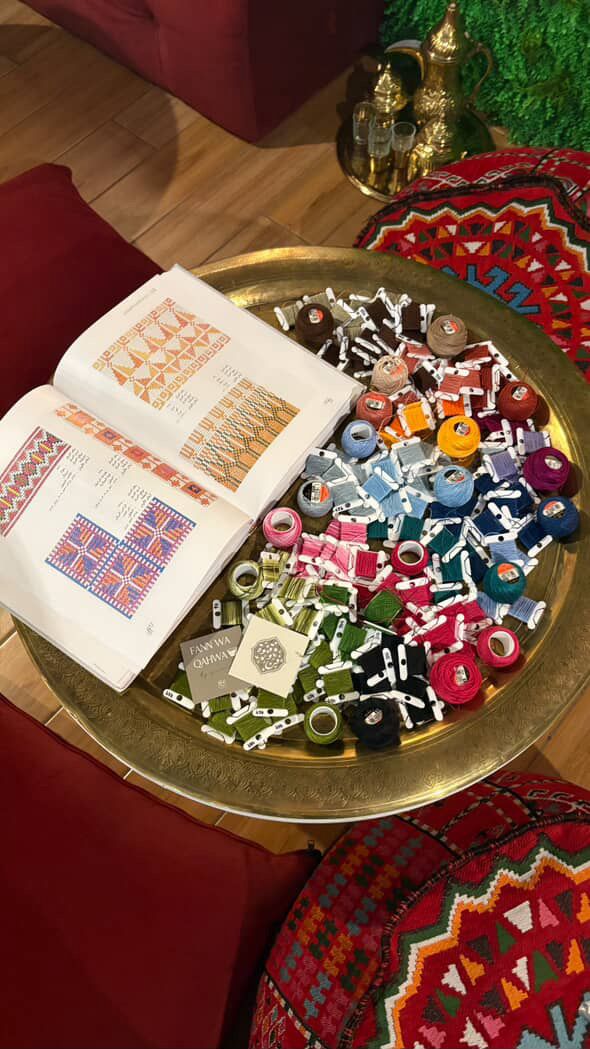Preserved Lemons Recipe and the Perfect Summer Salad

Sitting among the pillowy bread, hummus, falafel and pickled olives at breakfast one day in Jerash Camp, I will never forget these golden gems the first time I tasted them. If it were possible to take a bite out of the sun, I imagined that this is the feeling: refreshing and fragrant with a characteristic Gazan kick of heat. The bowl of preserved lemons prepared lovingly by our SITTI team member and soap artisan, Ikram, was (and still is) one of the most exciting things I have ever tasted.
After years of moving from place to place, I’ve finally landed in Los Angeles, a town where citrus is abundant. Ikram’s preserved lemons were the first flavor that came to mind when I spotted the young lemon tree in our backyard.
This recipe is inspired by Ikram’s, although not exact. Salt, fat, acid, and heat are the main elements of this addictive pantry staple. Meyer lemons in particular are a plentiful variety in southern California, so they’re what I use in this recipe. However, feel free to preserve whatever lemons you can access.
It’s important to note: This process takes time, but it’s well worth the wait. You’ll have lemons and sunshine available in your pantry year-round for all sorts of uses.
Ingredients:
8 Meyer lemons, as fresh as possible. (If you don’t have Meyer varietal, then whatever lemons you can access are fine. I enjoy Meyers, because they’re a cross between a lemon and a mandarin, so they’re sweeter. Their rind is also softer and less bitter than normal lemons.)
8 tablespoons sea salt
5-6 ct. 12 oz. widemouth glass jars (Ball-brand or other)
5-6 large squares of parchment paper
12 rosemary sprigs, or bay leaves
Chili pepper flakes
Whole black peppercorns
Juice of 8 additional lemons
1 liter bottle of extra virgin olive oil

Directions:
- Sterilize your jars. You can do this by filling them with boiling water, allowing them to sit for 1-2 minutes, and then emptying them. Allow them to dry on a clean, dry towel. Do the same to the lids.
- Wash the lemons, making sure that you remove all dirt from the skin’s surface. Put the lemons in a colander in the sink and pour boiling water over them to ensure that they’re not carrying any unwanted bacteria into your clean preserving jars.
- Using a sharp knife and starting from the top or pointed part of the lemon, cut it down the center, while leaving the base intact. Make another cut from the top, forming a cross. Again, leave a little less than an inch at the base unscathed. The lemon should open into 4 quarters, or wedges, while staying attached at the base.
- Using a tablespoon to measure, pack the center of each lemon with 1 tablespoon of salt and add it to a sterilized jar.
- Do your best to fit 2 lemons into each jar, pushing them down tightly so they’re squeezed together inside. Lay a square of parchment paper over the mouth of the jar and then seal the jar shut. The parchment paper will help prevent corrosion from the salt if you’re using metal lids. Repeat this process with all your lemons.
Depending on the size of your lemons, you may not always be able to squeeze 2 lemons into each jar. Do your best, since the idea is to fill as much of the jar as possible. Any singular lemons can still be preserved on their own. There will be an opportunity to fill the jars further in the next step.
- Leave the jars in a cool spot (or in your fridge) for at least a week.
1 week (or more) later…
- Remove they lid to each jar and press the lemons down as hard as you can. Your goal is to release as much juice as possible in the jar.
- Per jar: add two sprigs of rosemary or two bay leaves, a few shakes of chili pepper flakes (or more if you enjoy a stronger kick), and a few whole peppercorns. Fill the jar with lemon juice, just ½ an inch or so below the maximum fill line. Pour a thin layer of extra virgin olive oil until it reaches the line.
- Seal the jars and leave them in the refrigerator for at least 4 weeks to cure. The longer they are left, the better they’ll taste!
4 weeks (or more) later…
- Your preserved lemons are ready to enjoy! If you cured your lemons in the fridge, you might notice that the olive oil has solidified. This is a sign of good olive oil, and it will quickly soften once you remove it from the cold. Take a fork and pull your preserved lemons from the jar. Cut what you want, and return the rest to the jar and store in your refrigerator.

The Perfect Summer Salad: Arugula (“Jarjeer”) and Microgreen Salad with Preserved Lemons
- Fill a bowl with washed, crisp arugula and an assortment of microgreens
- Pull half a preserved lemon from a jar. Using your SITTI lemon squeezer, release the juice from the preserved lemon directly into the bowl of greens.
- Finely chop or mince the lemon rind and add it to your salad.
- Drizzle some of the briney, oily juice from the jar over your salad. Mix and enjoy.

Other uses…
Stir finely minced preserved lemon rinds with 1 cup of mayo and spread it on fish, asparagus or dollop on brussel sprouts.
Or eat them solo, rinds and all!
Another note: To best recreate this recipe, I also employed adaptations of two great preserved lemon recipes: Ottolenghi and Tamimi’s recipe from Jerusalem and the recipe from The Occidental Arts & Ecology Center Cookbook. We’re not being paid anything to promote these books! I just love them and reference them often.
Author: Jacqueline Sofia, Co-Founder, SITTI





Leave a comment